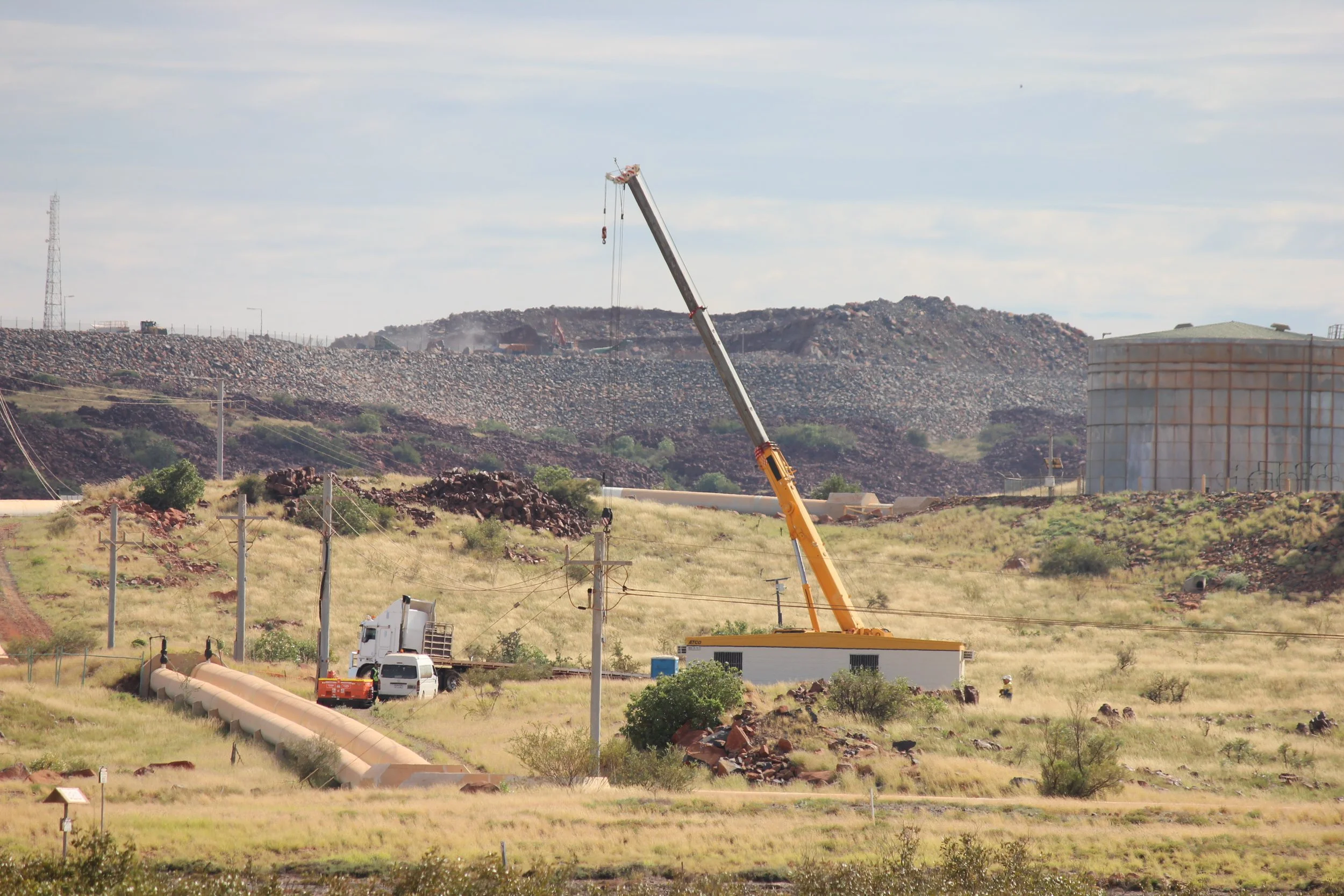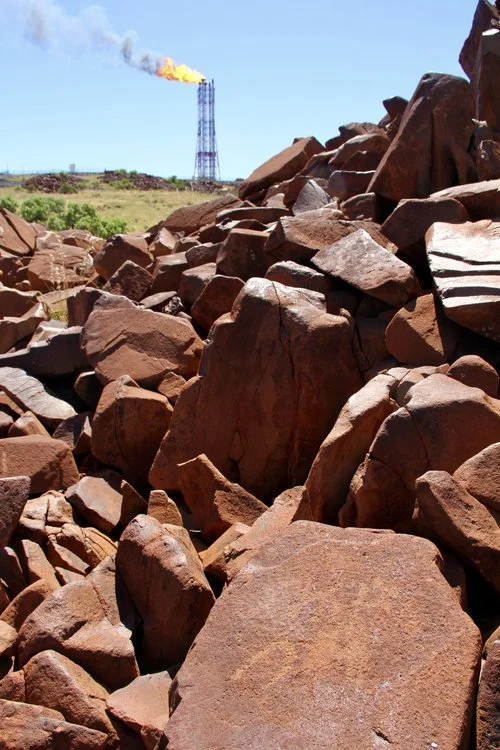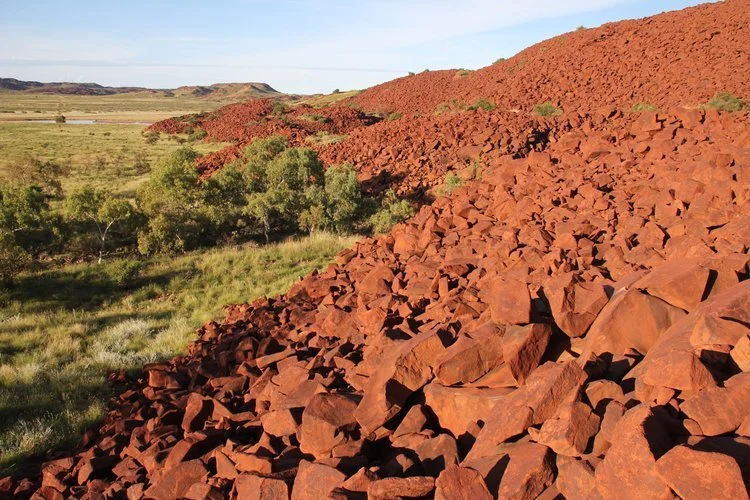CLIMATE EXPERT WARNS PERDAMAN FERTILISER PLANT WILL BE STATE'S LARGEST GAS USER
BY ELIZA KLOSER
A crane was used on the Perdaman site on Friday, when Ngaarda Media understands rock art removals were taking place. Credit: Eliza Kloser
A world-leading climate scientist has warned the Perdaman urea fertiliser facility being built at Murujuga, the Burrup Peninsula will be Western Australia’s single biggest gas user and create excessive carbon pollution.
Climate Analytics CEO and Senior Scientist Dr Bill Hare has co-authored a report published by Climate Analytics about the Perdaman project, which says the project will emit 200 million tonnes of greenhouse gas emissions over its lifetime and the equivalent of 2.5-3 per cent of WA’s 2021 emissions each year.
The urea plant will be powered by fossil gas from Woodside Energy, which also operates on the Burrup.
At a sod-turning ceremony last week, Perdaman Founding Chair and Managing Director Vikas Rambal described the $6 billion fertiliser plant as a low-emitting project which Western Australians should be proud of.
“We are building the cleanest project on the earth, and we should be proud of where it’s built,” he said.
But Dr Hare said the emissions from the project would be substantial.
“It's a very large amount of emissions that are being added to the atmosphere as a consequence of this project at the very time when the world is racing to get to zero,” he said.
“Right now, every tonne of carbon going into the atmosphere matters, and we need to reduce it.”
Perdaman proposes to offset the majority of direct emissions from the facility, however, no details on the type or location of offsets are publicly available and Perdaman did not reply to Ngaarda Media’s request for more information.
Dr Hare said there had been a ‘lost opportunity’ for Perdaman’s fertiliser production to be powered by renewable energy.
“The Pilbara region is probably one of the greatest places in the world that we've ever seen to produce the cheapest electricity that can be turned into hydrogen and ammonia [to power fertiliser production],” he said.
“There's no reason this plant had to be made to run with fossil gas … given the potential and growing renewable energy output from the Pilbara region.”
Dr Hare and other scientists have also expressed concerns that emissions from the plant could have a more localised impact on the World-Heritage nominated Murujuga rock art.
Woodside’s Pluto plant in site of sacred rock art. Credit: Supplied.
The Burrup Peninsula in the Pilbara region of Western Australia holds more than a million rock art engravings, some of which are more than 40,000 years old.
The Environmental Protection Authority recently warned that the rock art could face “serious or irreversible damage” from the Perdaman project.
Dr Hare said he is deeply concerned about this.
“I know there is some scientific controversy about it, but the published peer review papers do show that the industrial activity and the acid deposition that's been occurring over that area is having a negative effect, and the Perdaman plant will just add to that,” he said.
At a press conference announcing the start of construction of the Perdaman plant, Premier Mark McGowan claimed the Perdaman project would not affect the recent nomination for for World Heritage Listing.
However, Dr Hare said “no one should have any illusions” about the consequences of industrial activity on the approval process.
“I have no doubt that the industrial activity and the air pollutant are going onto the rock art [and] as a consequence is going to cause serious difficulties for [Murujuga] to go through the world heritage assessment and approval processes,” he said.
Perdaman last week started construction on the project and removed three sacred rock art sites to make way for the facility, in a move which has been widely criticised amongst the local Indigenous community.
Kuruma Marduthunera Traditional Custodian and Aboriginal & Torres Strait Islander Heritage Protection Act Section 10 Applicant Josie Alec said she did not approve the project.
“The free, prior and informed consent has still not been given to Perdaman to remove these rocks - not all Traditional Custodians have been consulted on this,” she said.
Ngajarli (Deep Gorge), in the Murujuga Cultural Landscape. Credit: Supplied.



